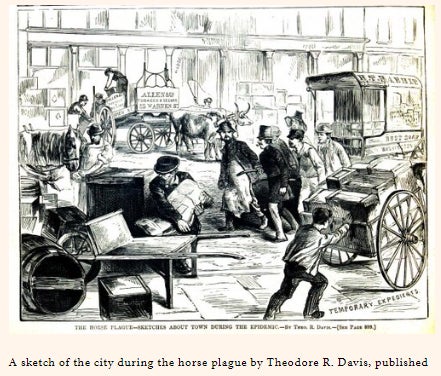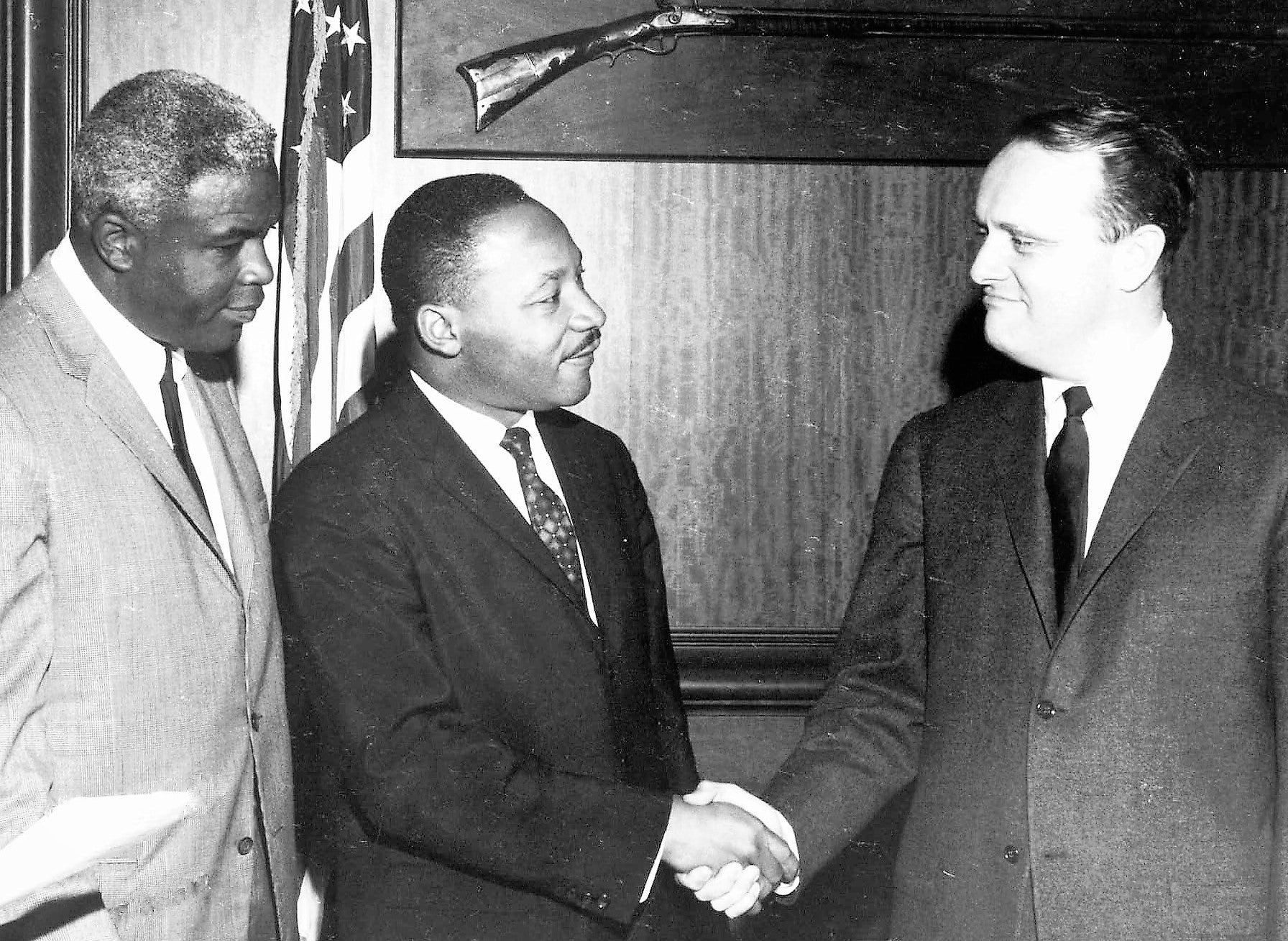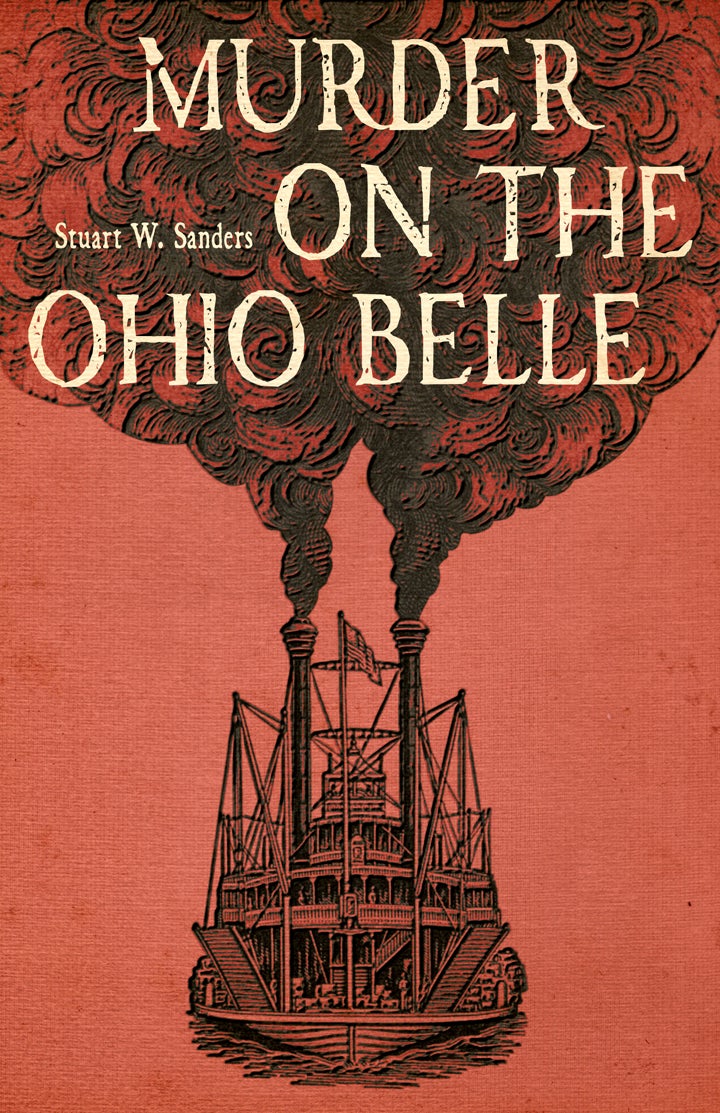In 1872, the Great Epizootic brought Frankfort and, for that matter, all of North America to a standstill. The Financial Panic of 1873 is today blamed on the corruptness of President Ulysses S. Grant’s administration. This tale was invented by Lost Cause adherents to discredit President Grant and thus his Civil Rights activities. The truth of the matter is that the Panic of 1873 was a result of the forgotten Great Epizootic of 1872-1873. This event was one of the factors that contributed to Gen. George Custer’s defeat at the Little Big Horn in 1876.
The Great Epizootic of 1872-1873 started in Toronto, Canada, during the summer of 1872, and by October 1872, it had crossed into the United States along the New York border with Canada. With it came sickness and death, not to human beings, but to horses. During the winter of 1872-1873, there was almost a 100% infection rate.
A U.S. government report describes the disease as “an epizootic specific fever of a very debilitating type, with inflammation of the horses or mules’ respiratory mucous membrane, and less frequently of other organs, having an average duration of 10 to 15 days, and not conferring immunity from a second attack in subsequent epizootics.” In layman’s terms, what North America was undergoing in 1872 and 1873 was an outbreak of equine influenza on par with the recent human COVID-19 epidemic.
When it first got sick, the horse appeared to have a slight cold, then a strong cough set in, followed by a runny nose. The horse would shortly thereafter cough up large masses of mucous, show little interest in food, and just collapse to the ground.
Horses that caught the epizootic disease became listless for two weeks or so and were unable to work. Then, if the horse survived the attack, it needed another four weeks or so after overcoming the disease to become healthy enough to work. Many horses that recovered from this disease never regained full strength.

Many of you reading this are saying, “So what.” Well, the “so what” is that the United States at that time was a nation that moved goods using horses. Yes, railroads and steamboats moved goods great distances, but the conveyance that brought goods and people to and from the railroad depot or steamboat landing was the horse. The commerce of Frankfort was based on horsepower.
Almost overnight during the spring of 1873, commerce in Frankfort came to a standstill. Farmers were unable to plow, so they could not plant their crops. If a farmer had a dairy herd, he could not bring the milk to town to be sold — it had to be dumped. The merchant had his order of summer goods sitting in the railroad freight house, but he had no means to bring it to his store.
Men were being employed to move goods within Frankfort by wheelbarrow. Commerce was at a standstill and shortages of this or that product developed at one location while another nearby location had a surplus of the same product. Without horses or mules to pull the wagons, the goods sat in one place.
It has been estimated that during 1873 the United States lost half its horsepower due to death or weakening of its horse population. With commerce at a standstill due to a lack of local horse transportation, the nation’s financial health collapsed, leading to the Panic of 1873.
Interestingly, oxen were immune to the 1873 epizootic outbreak and thus became the animal power that moved goods. Manpower also became a means of pulling wagons from one location to another within Frankfort. If in 2024, all of the trucks in the United States could no longer move due to a computer virus, think what this would mean to individuals’ survival and the health of the United States economy. The lack of horsepower in Frankfort in 1873 was devastating, but today, this fact can be found in no American history book as the connection between the economic health of Frankfort, or the United States as a whole, as the health of the nation’s horse population is irrelevant.
As for Gen. Custer and his defeat at the Little Big Horn, the United States cavalry lost so many horses during 1874 that a number of cavalry regiments were without mounts during 1874 and 1875. The 7th Cavalry, when it rode out to confront the Sioux in 1876, still did not have enough horses to mount its whole command or to pull its Gatling guns.










